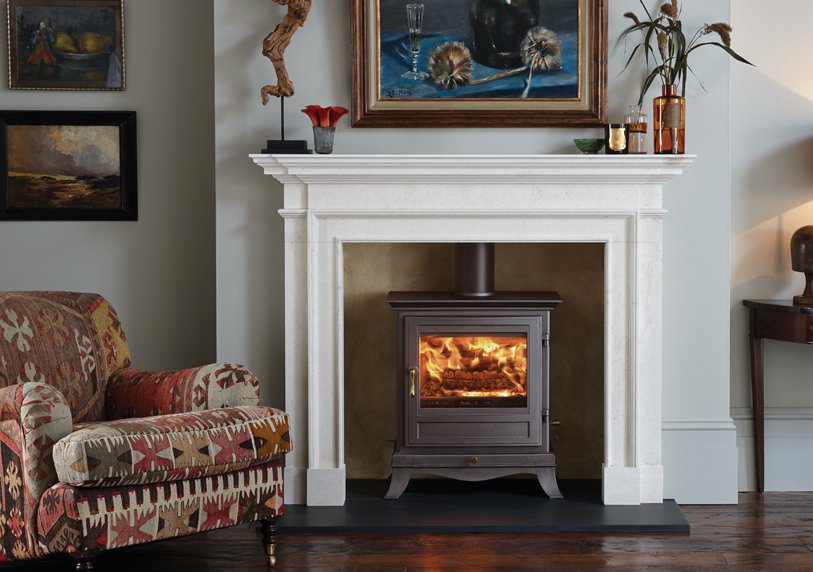

A guide to wood-burning, multi-fuel and safe use of stoves
Are you unsure about whether to choose wood-burning or multi-fuel? If so, read on to get all your questions answered by stove expert, Huw Williams
WOOD BURNING STOVES:
1. Is there a particular type of wood that burns best? If so, why?
Some of the best woods to burn are Ash, Hawthorn, Apple and Wild Cherry due to their low-water content and the ability to be easily split with an axe. Generally hardwoods are best for open fires because they tend not to spit excessively, but there are some exceptions. Find out how to use a wood burning stove.
2. What is the best condition for the wood?
Wood should be burned when the moisture content is below 25% – “air-dry”. You can tell a log is dry because the bark will come away easily in the hand and the log will have splits across the grain. Ideally logs purchased should be no more than 10cm thick. Any that are will need to be split again to ensure they burn properly.
3. Is there any way to control a wood burner?
A Chesneys wood burning stove is operated by means of a single air control lever. This lever allows easily controlled temperature adjustment from a gentle flame to an intense burn.
4. I live in a smoke control area, what are my options in terms of a wood burner?
Any stove being installed in a smoke controlled area will need to be DEFRA exempt. All Chesney’s stoves are DEFRA exempt. Learn more.
5. What does a wood burner require in terms of maintenance?
A stove will require annual servicing and inspection of consumable components. We would also recommend annual chimney sweeping. Check out our stove maintenance basics.
6. Any other pros / cons of a wood burner?
Pros – If you are going to be burning predominantly wood then buy a dedicated wood burning stove rather than a multi-fuel. This means it will be optimised to burn the wood perfectly. Wood burning stoves are less expensive than a multi-fuel as there is less engineering involved in the manufacturing and less components making the appliance cheaper to purchase. Burning wood is environmentally better as wood is carbon-neutral as well as aesthetically better!
Cons – You need to make sure you have wood as you cannot burn anything else if you run out of logs.

MULTI FUEL STOVES:
1. What fuel does a multi fuel burn?
Multi-fuel stoves can burn wood, coal and smokeless fuel.
2. Why would you choose a multi fuel stove over a wood burner or a wood pellet stove?
If you intend to burn other fuels than logs. What are the key differences.
3. Briefly explain how a multi fuel stove is designed to burn more than one type of fuel.
A wood burning stove burns the fuel on a solid base so therefore the logs burn on a bed of ash with air from above. A multi-fuel stove has a cast iron grate and riddle plate both of which have holes in them. A coal fire needs air to reach it from below so by rotating the riddle plate any ash that builds up will drop through the holes letting more air through from underneath. By operating the fuel sector lever on a multi-fuel stove the direction of the combustion air is changed from either above or below.
4. Any other pros / cons of a multi-fuel stove?
Pros – Options of using different fuels
Cons – The stove is more expensive to purchase due to the additional components and additional engineering involved in the manufacture.

AND FINALLY… WHAT STEPS HAVE CHESNEY’S TAKEN TO ENSURE ITS STOVES ARE BETTER FOR THE ENVIRONMENT?
Chesneys utilise clean-burn and air-wash technology which means that the polluting by-products emitted by the initial burning are re-ignited and burnt again. This double combustion substantially reduces emissions and contributes to a cleaner, healthier environment. Chesney’s stoves are under constant assessment and improvement to ensure they meet and exceed all required legislation both in the UK and Europe.
Are outdoor wood burners bad for the environment?
For more updates follow us on Facebook, Twitter, Instagram or Pinterest.
